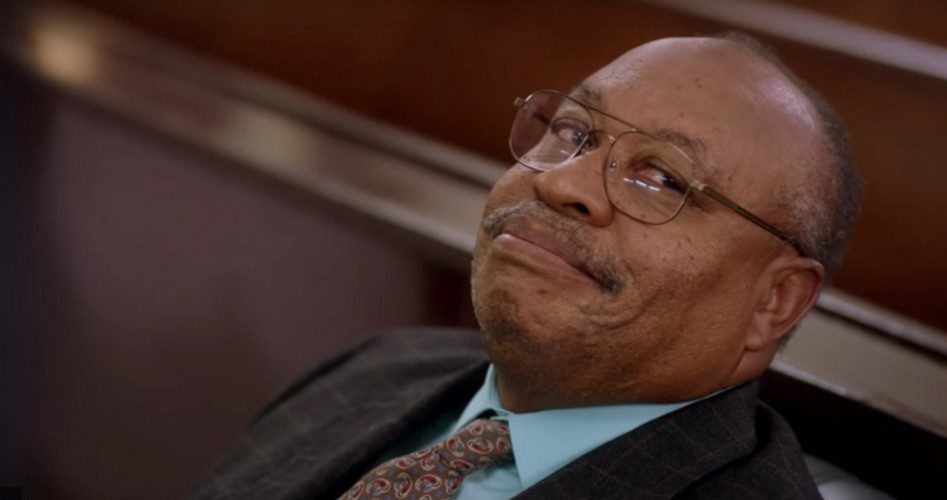
After four years of roadblocks and red tape, the horrific true story of Philadelphia abortionist Kermit Gosnell has finally made its debut, with Earl Billings (shown) playing Gosnell. An independent film funded through crowdfunding on Indiegogo, Gosnell: The Trial of America’s Biggest Serial Killer hits the mark as it brings to the screen believable characters with quality production.
Though the PG-13 movie tells the chilling story of the monstrosities that took place in the clinic that became known as Gosnell’s “house of horrors,” it was very tastefully done. Without revealing the graphic images of the victims that were used as exhibits in the trial, the producers successfully managed to open the mind of the viewer to what was being discussed.
{modulepos inner_text_ad}
Gosnell, who had owned and operated abortion facilities in Philadelphia since the 1970s, became known as a “late-term” abortionist, notorious for aborting babies past the legal limit of 24 weeks. He was charged with first-degree murder for killing babies born alive after failed abortions. His clinic, the Women’s Medical Society, was raided by authorities on February 18, 2010 due to suspicion of illegal drug prescription use after an investigation that had lasted months. The investigation brought to light the suspicious death of one of his patients, and the raid revealed much more than the illegal drug use already suspected. The remains of tiny victims were discovered in various places throughout the clinic, including in plastic bags that lined the halls and in milk jugs in the refrigerator. The clinic itself was squalid, with filthy furniture and unsanitary, outdated and broken medical equipment, and overly sedated patients awaiting “procedures” often to be performed by unlicensed workers.
According to the Grand Jury report:
When the team members entered the clinic, they were appalled, describing it to the Grand Jury as “filthy,” “deplorable,” “disgusting,” “very unsanitary, very outdated, horrendous,”and “by far, the worst” that these experienced investigators had ever encountered. There was blood on the floor. A stench of urine filled the air. A flea-infested cat was wandering through the facility, and there were cat feces on the stairs. Semi-conscious women scheduled for abortions were moaning in the waiting room or the recovery room, where they sat on dirty recliners covered with blood-stained blankets. All the women had been sedated by unlicensed staff — long before Gosnell arrived at the clinic — and staff members could not accurately state what medications or dosages they had administered to the waiting patients. Many of the medications in inventory were past their expiration dates … surgical procedure rooms were filthy and unsanitary … resembling “a bad gas station restroom.” Instruments were not sterile. Equipment was rusty and outdated. Oxygen equipment was covered with dust, and had not been inspected. The same corroded suction tubing used for abortions was the only tubing available for oral airways if assistance for breathing was needed….
Fetal remains [were] haphazardly stored throughout the clinic — in bags, milk jugs, orange juice cartons, and even in cat-food containers…
Staying true to the facts and even using real footage at times, the movie engagingly portrays the trial and the events surrounding it.
Husband and wife producers, Phelim McAleer and Anne McElhinney, who are also journalists, found themselves drawn to the story that the major media seemed repelled by.
In an interview with EWTN, McAleer recounts, “I walked into that trial in Pennsylvania, in Philadelphia, and in front of me were the most horrific pictures that I had ever seen. I listened to the evidence, I couldn’t believe it, but behind me was the most shocking thing of all. No press, just a couple of local journalists, no national press. And this guy has killed hundreds, if not thousands, of people in a 30 year killing spree.”
One reporter considerably impacted the case by taking a picture of the empty seats in the courtroom reserved for the press and published it on social media where it drew substantial attention. Then, and only then, did the national press decide to notice the case.
The producers believe Gosnell to be the most protected mass murderer in American history, and the case to be a cover-up. “It’s a story that needs to be told fairly and we’ve done just that,” claims McElhinney, going on to say, “the cover-up stops here.”
Fighting that cover-up, however, proved to be an arduous job for the husband and wife team, as they were met with many obstacles from those who would prefer the truth not be told. McAleer revealed in an interview with The Federalist, “Kickstarter refused to let us crowdfund to fund the film and NPR have just rejected us from advertising the movie on the taxpayer funded station. Now Facebook is trying to censor the movie by preventing its creators from advertising on Facebook. They really, really don’t want this story told.”
Another difficulty was presented when the judge who presided over the Gosnell case, Judge Jeffrey Minehart, filed a lawsuit against the couple, as well as their film production company, accusing them of defamation. Still, the producers persisted in their endeavor to bring this travesty into the public eye.
Recognizing the inevitable controversy of the topic, McAleer notes, “Abortion is like a religious belief.” It does, indeed, seem to be a “sacred” thing not to be touched, at least negatively. At the start of their journey in producing this film, McAleer and McElhinney considered themselves “neutral” on abortion. However, the more they viewed the evidence, the more their views changed. “I’ve seen the photographs”, said McElhinney, regarding the bodies of the murdered babies. They are “unimpeachable.” McElhinney was raised Catholic and had left the faith for a time, but acknowledges, “This story brought me back to prayer.”
Gosnell was not put on trial for performing abortions, which is “legal” in Philadelphia and elsewhere in the United States. For this reason, both the police investigation and the trial of Gosnell, in real-life as well as in the movie depiction, is not about abortion. Yet anyone who examines the facts — or for that matter, watches the movie — should be able to connect the dots between illegally killing babies after they have been aborted alive, and legally killing babies while they are still in the womb. After all, the physical location of the baby — inside or outside the mother’s womb — does not change the nature of the baby.
Gosnell divulges the truth of a madman employing extraordinarily barbaric tactics in an industry already conceived in death and fraught with gruesome procedures. In the process, this truth naturally shines a light into the dark areas that need to covered up if abortion is to be regarded as “humane” and “compassionate”. Without pretense, this film lays out the ugly, gruesome facts about abortion, legal and illegal, erasing the boundaries between the two, and leaving the viewer with the information needed to make a sound judgment.
Photo of Earl Billings as Dr. Kermit Gosnell: Screen-grab from Gosnell trailer



